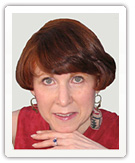e-Tips
08/2014 Key Issues to Tackle in the Multigenerational Workplace NOW
Earlier this summer I was interviewed for a research project and master’s thesis by an EY (rebranded from Ernest & Young) Fellow in Ireland. For one of the questions, I generated a long list that provides an overview of challenges in the current multi-generational workplace. I am happy to share this with you.
07/2014 Get Ready For Cross-Generational Conversation Working with Gen Z
There’s a 5th generation in the workplace wings. I am asked about the generation following Gen Y/Millennials. What are they like? What do we call them? Here I summarize some useful observations and give my interpretation of comparisons with other generational cohorts as well as 12 tips.
06/2014 At Last! Millennial Men Make It Safer and Sexier to Domesticate
It was hard to miss the deluge of articles (and they’re still coming): “The Daddy Juggle;” “The Increasing Choice to Be a Stay-at-Home Dad;” “The Rise of the Hands-On Dad,” for example, in the major business media. Stigmas do still exist. Nonetheless the percentage increase in stay-at-home and highly involved dads has been significant. Time to re-think flexibility.
05/2014 Healing Generational Communication Disconnects
It’s obvious to just about everyone that we have been witnessing fundamental changes in communication media and styles, accelerating markedly in the last 15 years. Technology and the market have led the way to faster, more efficient, smaller, “always on” media. Communication styles have followed and adjusted, causing generational and occupational divides.
04/2014 Reviving Use of Nonverbal Cues Aids Cross-Generational Communication
In a fascinating article on the “Taste” page of the Wall Street Journal almost 5 years ago, Mark Bauerlein made a powerful case for the need to bridge the gap between the Gen Y texting culture and use of what anthropologist Edward T. Hallcalled “the Silent Language” - nonverbal cues or body language and voice tone.
03/2014 How to Be a “Best Place to Work”
Many of us have an intuitive sense about what makes a "best place to work." Various surveys track what employees are looking for to join and stay, and those items shift in rank from generation to generation depending on existing social, political and economic circumstances.
02/2014 How To Achieve Successful Multi-Generational Collaboration
It’s time to revisit how the generations collaborate at work. Collaboration has become the preferred work style, and a large percentage of workplaces are multi-generational.
01/2014 HAS THE MISSING PIECE ELUDED YOU? – Find the Inter-generational Solution
Generational differences in attitudes inform and influence attitudes and behaviors toward all the other types of diversity and individuals’ worldviews. They are integral, “joined at the hip,” so to speak.

